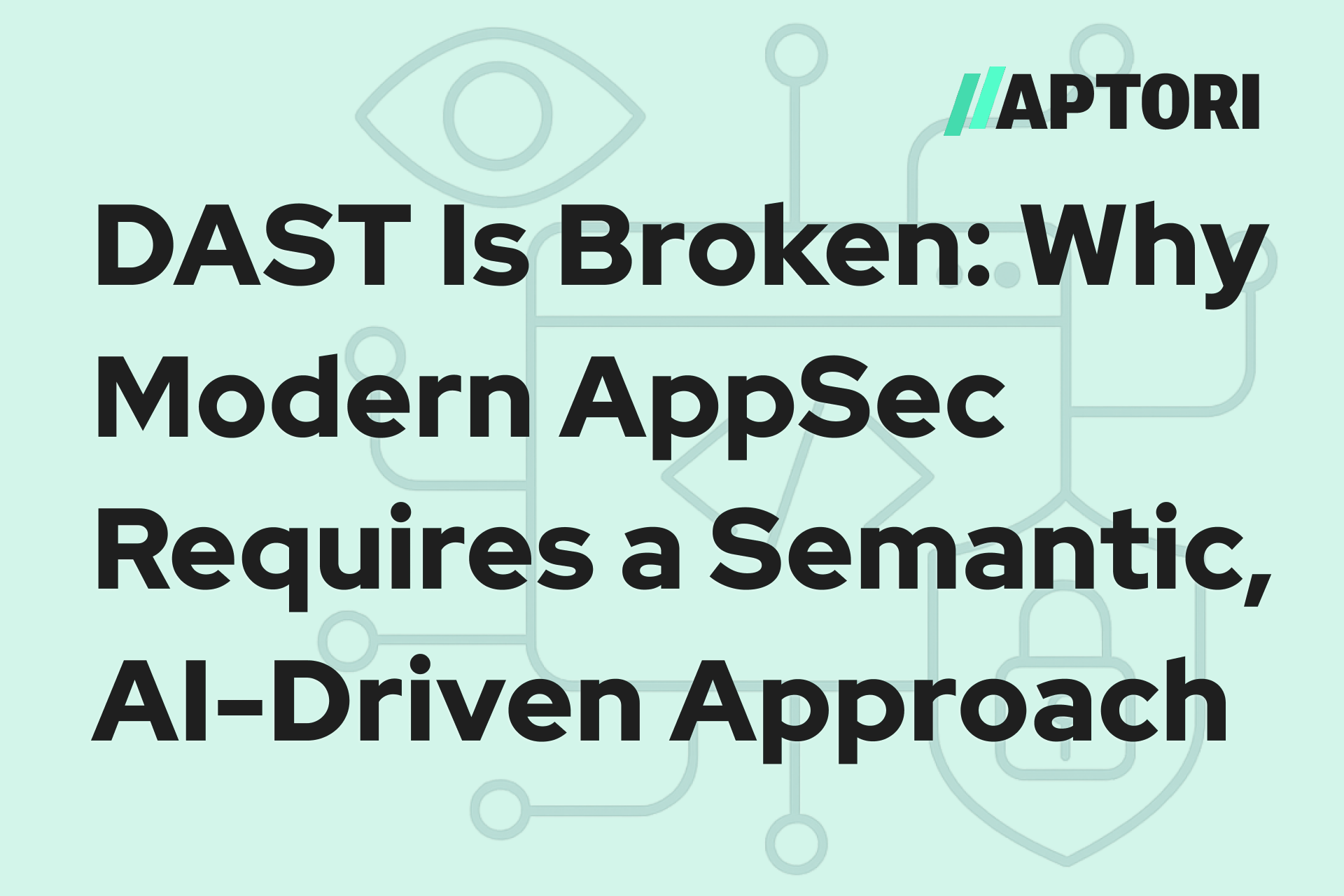Legacy DAST Was Built for a Different Era
Legacy DAST made sense when applications were pages, forms, and predictable input fields. A scanner could crawl a site, fuzz parameters, dump a report, and someone would eventually triage it. That model collapses the moment you move into an API-first architecture.
Modern applications are not HTML surfaces anymore. They are Agentic, REST, GraphQL, gRPC and internal service-to-service communication. Authentication sits in tokens, headers, and ephemeral sessions. Business logic is implemented across multiple services, not exposed in a form field. Attackers do not poke login pages. They chain object references, replay tokens, and exploit authorization gaps. Legacy DAST cannot see any of this, and CISOs already know it.
The center of gravity in application security has shifted to API security, but legacy DAST was never designed to operate there.
Crawling and Fuzzing Do Not Work on APIs
The fundamental failure is architectural. Old scanners rely on crawling. They look for pages, links, parameters, and HTML interactions. APIs do not expose anything to crawl. A spec might exist, but traditional tools do not consume it or understand object models. They also do not maintain state or identity, so they cannot simulate role-based access, token replay, or session transitions. They guess, and they guess blindly.
That is why they miss the vulnerabilities that matter. API breaches today are not about guessing SQL injection payloads. They are about accessing another user’s resource (BOLA), manipulating object properties (BOPLA), abusing role transitions, or triggering SSRF through internal logic. None of these are discoverable by crawling a site and fuzzing a few parameters. Legacy scanners are built for what apps looked like fifteen years ago.
APIs broke legacy DAST. Attackers did not wait for vendors to catch up.
Velocity and Noise Turn Legacy DAST Into Shelfware
CI/CD ships code daily, not quarterly. Containers spin up and disappear in hours. Environments are ephemeral. A scan that runs once a quarter and takes days to produce a PDF is useless before developers even read the summary. Reports full of unvalidated and unactionable findings get ignored. False positives become background noise, and AppSec has to manually retest everything before anyone commits to remediation. Developers tune it out, and security loses credibility.
Compliance Now Expects Continuous Evidence
Compliance does not tolerate that anymore. PCI DSS 4.0, NIST CSF, and SOC 2 now expect continuous testing, evidence-backed results, and coverage of APIs and internal services, not just the public web front end. “We ran a scan last year” is no longer defensible. Regulators are catching up to where attackers have already gone.
Next-Gen DAST Is Not an Upgrade. It Is a Replacement
Next-generation DAST is not about improving old scanners. It is a complete departure from crawling and fuzzing. The future is semantic and autonomous.
Instead of guessing endpoints, the platform ingests OpenAPI, GraphQL schemas, or WSDL contracts and builds an internal model of every route, object, and parameter. Instead of fuzzing blindly, it generates attacks based on intent such as authorization bypass, token misuse, object-level privilege, injection with context, SSRF chains, and multi-step flows. Instead of failing at authentication, it handles OAuth, JWT, sessions, and role-aware testing.
Replacing legacy DAST is not optional. The only choice is whether you do it before or after an incident.
Continuous and Embedded. Not Periodic and External
This model runs in CI/CD pipelines, on pull requests, against staging and pre-production, and continuously in deployed environments. There is no crawling dependency and no manual configuration of forms or URLs. It runs where the application actually lives, not where a crawler can reach. Findings come with evidence, not guesses. Exploitability is validated automatically, so development teams do not waste time chasing ghosts.
Business Logic Attacks Require Understanding. Not Guessing
The right platforms do not pretend business logic is invisible. They model it. They detect BOLA, BOPLA, IDOR, SSRF, and role confusion because they understand the relationship between identities, objects, and operations. They do not fuzz id=123. They ask what happens if a different user requests order 567 or modifies a field their role should not touch. That is how attackers think, and that is how modern tools must operate.
A Security Shift CISOs Can Act On
For CISOs, the shift is pragmatic, not theoretical. You cannot secure APIs with scanners that were never designed for them. You cannot claim coverage when most of your surface is not visible to the tool. You cannot manage risk with reports full of noise and zero validation. You cannot meet compliance requirements with point-in-time crawling exercises.
Compliance now expects continuous validation, not a PDF from last quarter.
The Replacement Cycle Has Already Started
AI-driven, semantic, autonomous testing platforms are not extensions of legacy DAST. They are successors. They reduce false positives by validating impact. They integrate directly with development workflows. They generate real proof instead of speculative risk. They handle authentication flows without manual scripting. They run continuously, not annually. They surface the vulnerabilities that actually lead to breaches.
The term “DAST” might survive, but the technology behind it will not. What is coming next is not a better scanner. It is a different class of security capability built for how software is written and attacked today. Organizations that adopt this model get ahead of attackers and regulators. Those who stick with crawling and fuzzing will stay blind to the risks already inside their APIs.
The replacement is already underway. The only question is whether security teams lead it or lag behind attackers and regulators.
Take control of your Application & API security with contextual testing, risk assessment, and continuous vulnerability management
See how Aptori’s award winning AI-driven security platform performs business logic testing to uncover hidden API threats, prioritizes risks, and automates remediation—request your personalized demo today and transform your security into a proactive advantage.















